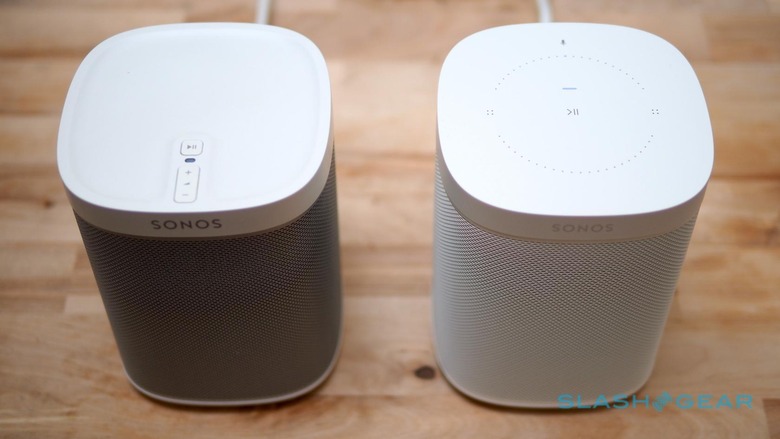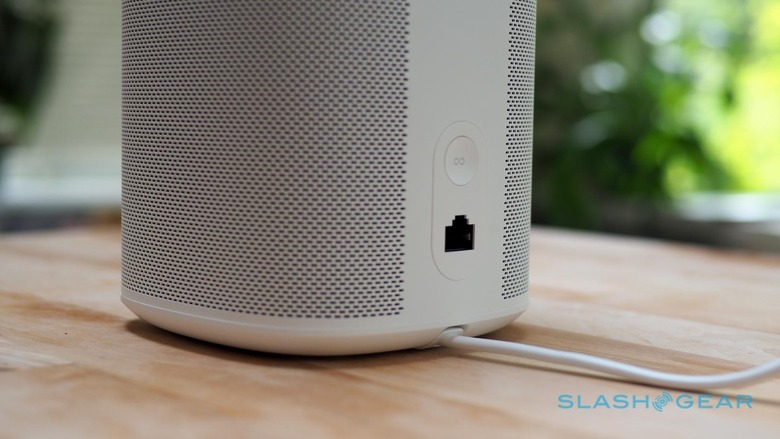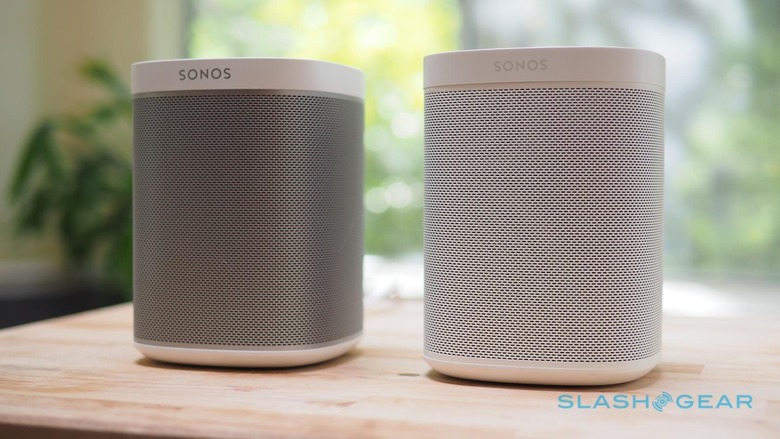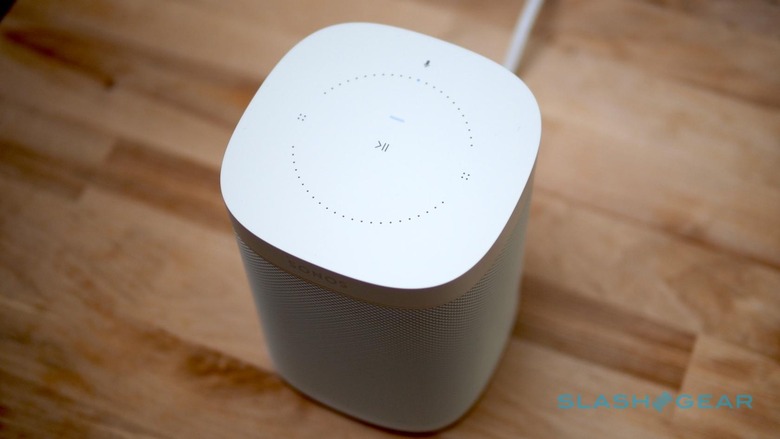Sonos One Vs PLAY:1 - The 411 On The Newest Alexa Speaker
It's the season of smart speakers, but the Sonos One has a strong pitch for being your voice-driven media player of choice. As we found in our full review, despite a few teething pains the Amazon Alexa-powered speaker adds an impressive new dimension to home audio playback. Read on for four things about the Sonos One that you really should know.
It looks like a PLAY:1, but it's (almost) completely different
You'd be forgiven for asking why the Sonos One took so long to arrive. After all, side-by-side with the PLAY:1 – which was launched all the way back in 2013 – you could easily assume that the differences were minor. Turns out, that's not the case.
Indeed, according to Sonos only two external parts are actually shared between the PLAY:1 and the Sonos One: the base plastic molding, and the rubber feet. Everything else is new. That includes the speaker grille, which now matches the body of the speaker rather than being a contrasting color, and the new control panel on the top which adopts the same touch-sensitive controls as the second-gen PLAY:5.

Inside there's even more newness. The amp is the same, but its power supply has been redesigned so as to suit the performance and power of the new model. While the PLAY:1 put its WiFi components at the top, the Sonos One moves them as the microphone array needs that spot. The new transducers are designed to handle more heat from the beefier CPU.
It works just like a regular Sonos speaker
Sonos might have embraced Alexa, but it hasn't forgotten its roots. When you set the Sonos One up – through the regular Sonos app – it'll show up as just another speaker in your room list. You can group it with existing Sonos speakers you might have, control playback as normal, and generally treat it as you would a PLAY:1.
One difference that might affect some people is the absence of a threaded mount on the back. Whereas the PLAY:1 offered that for those wanting to wall-mount the connected speaker, the Sonos One replaces it with a networking pairing button. Sonos tells me there'll be third-party mounting options offered instead.

If you're a Spotify user, patience is required
Once upon a time, Sonos users had huge catalogs of locally-stored music. Now, streaming services are the go-to option. The Sonos One supports some of the most popular, but there are some lingering omissions that are worth bearing in mind, depending on who you pay your monthly music tithe to.
Out of the box, there's full support for Amazon Music, iHeartRadio, Pandora, SiriusXM, and TuneIn. That means you can ask for tracks or albums by name, control playback, and more. If you're reliant on another service, though – notably Spotify – it's not so straightforward.

Sonos One will still play them, you'll just have to start playback from the Sonos app on your smartphone or tablet. After that, you can control volume, skip to the next track, play/pause, and ask what's playing by voice. Sonos tells me Spotify will be "available soon" and that the Sonos One will be the first third-party speaker to have Alexa control for the streaming service.
Pick your assistant wisely
Clearly, Sonos isn't the first to market with a smart speaker. What's more unusual is that it's taking an assistant-agnostic approach to it. While it only supports Alexa today, come 2018 the plan is to add Google Assistant support to the speaker. It's not been explained how that coexistence will be managed, but it seems likely that the keyword trigger you use – "Alexa..." or "Ok Google..." – will decide which assistant responds.
Of course, while Sonos might be open to other assistant partnerships, there are some which might not want to play ball. If you're an Apple Music subscriber, it's unclear whether you'll ever be able to control that by voice on the Sonos One, since it seems unlikely that Apple will allow the speaker firm to use Siri. If you want the same assistant from your iPhone on your connected speaker, you're probably going to have to buy a HomePod later in the year.

Wrap-up
What stands out to me about the Sonos One is how the company has gone from being the de-facto "expensive" option to actually looking surprisingly affordable now. Yes, the Sonos One is more expensive than the upcoming Echo Plus, which will be $149.99, but the imminent Google Home Max is $399 and the HomePod won't be short of that, at $349.
I'm yet to audition all four in the same place, and so I can't say yet which sounds the best. Still, considering the impressive audio quality the Sonos One is capable of, if you've been holding out for a smart speaker with serious musical abilities, this might be the one.
